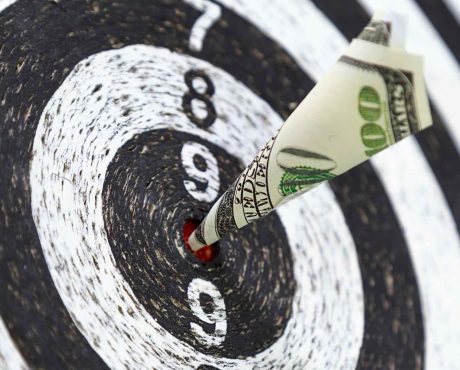A Reliable Dividend Stock for Income Investors
Generally speaking, income investors aren’t really fans of buying stocks after they shoot through the roof.
The reason is two-fold: first, soaring stocks tend to experience pullbacks; and second, there is an inverse relationship between dividend yield and stock price.
However, there is at least one dividend stock that’s worth considering despite trading at new highs.
I’m talking about Johnson & Johnson (NYSE:JNJ).
Johnson & Johnson is one of the largest, most diversified health-care companies in the world. It has established global market positions in all three key segments: Consumer Health, Pharmaceuticals, and Medical Devices. And, despite being a mega-cap stock, JNJ has been traveling on a nice upward trend, gaining 56% over the past five years.
Looking at the chart below, you’ll see that even the pandemic-induced market sell-off was not able to do much damage to Johnson & Johnson stock. The company’s share price did fall in March 2020…but before we knew it, JNJ stock had shot back up, going on to climb to new highs.
Johnson & Johnson (NYSE:JNJ) Stock Chart
As I said, there is an inverse relationship between dividend yield and stock price. So, as JNJ stock went up, it put downward pressure on its yield. Trading at $148.76 at the time of this writing, the company offers an annual dividend yield of 2.7%.
Chart courtesy of StockCharts.com
While this means Johnson & Johnson does not appeal to many yield hunters, keep in mind that we are in a low-yield environment right now. In fact, the average dividend yield of S&P 500 companies is just 1.71% at the moment. (Source: “S&P 500 Dividend Yield,” multpl.com, last accessed October 8, 2020.)
The case for income investors to consider JNJ stock becomes even stronger when you factor in the growth in its payout.
Over the past five years, Johnson & Johnson’s quarterly dividend rate went from $0.75 per share to $1.01 per share, marking a total increase of 34.7%. (Source: “Dividend History,” Johnson & Johnson, last accessed October 8, 2020.)
Those dividend hikes are the reason why, despite the increase in the company’s share price, it still manages to offer an above-average yield.
Looking further back, you’ll see that Johnson & Johnson has raised its payout every year for the past 58 years. When it comes to providing recession-proof dividends to shareholders, few companies have done a better job than JNJ.
And if you are wondering whether Johnson & Johnson can justify such an elevated share price, keep in mind that over the years, the company has substantially grown its business.
Consider this: in 2015, Johnson & Johnson generated $70.1 billion in sales. In 2019, the company’s sales totaled $82.1 billion. During the same period, JNJ’s adjusted earnings per share grew from $6.20 to $8.68. (Source: “2019 Investor Fact Sheet,” Johnson & Johnson, last accessed October 8, 2020.)
For an established company that has been around for well over 100 years, this kind of growth in both its top and bottom lines is truly impressive.
Of course, this does not mean JNJ is immune to the impact of the COVID-19 pandemic.
We know that the world economy entered a serious downturn due to the pandemic. According to the Bureau of Economic Analysis’ latest estimate, second-quarter gross domestic product (GDP) in the U.S. decreased at an annual rate of 31.7%. (Source: “Gross Domestic Product, 2nd Quarter 2020 (Second Estimate); Corporate Profits, 2nd Quarter 2020 (Preliminary Estimate),” Bureau of Economic Analysis, August 27, 2020.)
Unsurprisingly, businesses deteriorated across industries. According to Fact Set, the aggregate year-over-year earnings decline for S&P 500 companies was a staggering 37% in the second quarter of 2020. That marked the biggest drop since Fact Set began tracking this statistic in 2002. (Source: “Record Performance vs. EPS Estimates By S&P 500 Companies In Q2,” Fact Set, August 28, 2020.)
Johnson & Johnson’s business was impacted, too. In the second quarter, its sales declined 10.8% year-over-year to $18.3 billion. Excluding the impact of acquisitions, divestitures, and currency exchange, the company’s operational sales decline was 8.8%. (Source: “Johnson & Johnson Reports 2020 Second-Quarter Results,” Johnson & Johnson, July 16, 2020.)
At the bottom line, Johnson & Johnson’s adjusted earnings came in at $1.67 per share for the quarter, substantially lower than the $2.58 per share earned in the year-ago period.
But here’s the thing: while the company’s financials were down year-over-year, its profit still covered its $1.01 per share quarterly dividend rate with ease.
Also, health care is known for being a recession-proof industry. While the ongoing pandemic means there will be uncertainty for Johnson & Johnson’s Pharmaceutical and Medical Devices segments, the company did say in a recent investor update that in the Consumer segment, it is “experiencing increased consumer-driven demand with certain products and markets” and it is meeting the demand “in a controlled manner.” (Source: “Johnson & Johnson Business Continuity Statement,” Johnson & Johnson, September 23, 2020.)
Bottom Line on Johnson & Johnson Stock
And there you have it. Given the uncertainties, JNJ stock could experience some volatility in the short term. But for patient income investors, the company’s durable business and growing dividends should be rewarding in the long run.
